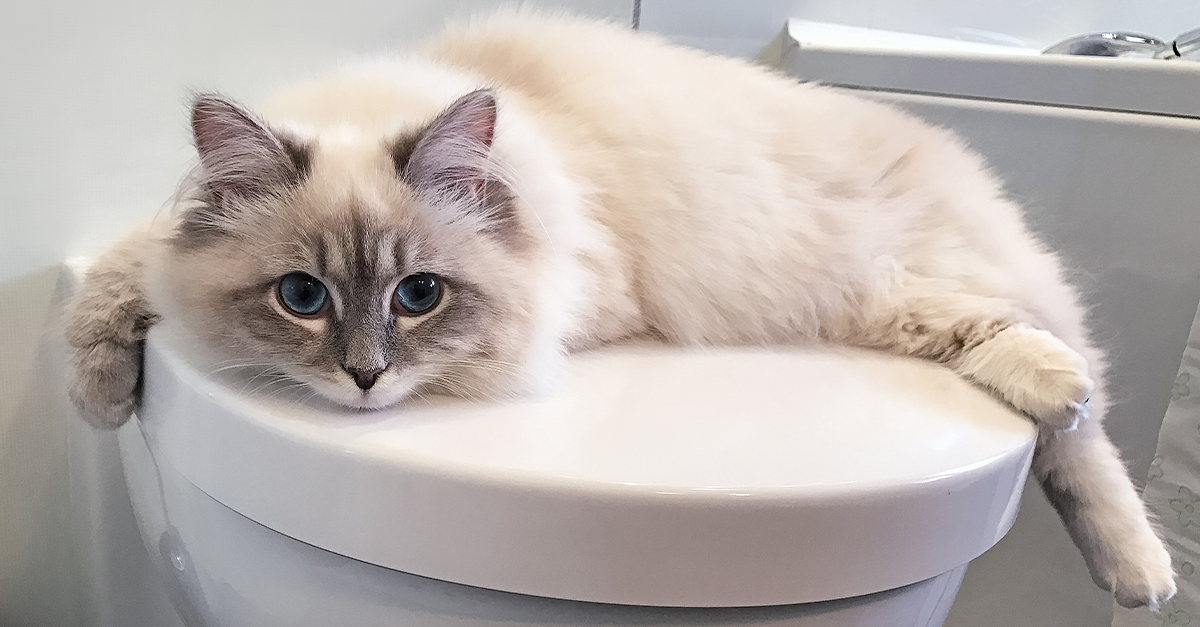Avoid Flush Cat Poop Down Your Toilet - Maintain Your Home's Plumbing Integrity
Avoid Flush Cat Poop Down Your Toilet - Maintain Your Home's Plumbing Integrity
Blog Article
Were you interested in tips around How to Dispose of Cat Poop and Litter Without Plastic Bags?

Introduction
As feline proprietors, it's vital to bear in mind just how we dispose of our feline friends' waste. While it may seem practical to purge pet cat poop down the commode, this technique can have detrimental consequences for both the environment and human health.
Environmental Impact
Flushing feline poop introduces damaging virus and bloodsuckers right into the water, posing a significant risk to aquatic communities. These impurities can adversely affect aquatic life and compromise water high quality.
Health and wellness Risks
In addition to environmental concerns, flushing pet cat waste can additionally present health and wellness dangers to people. Pet cat feces might include Toxoplasma gondii, a parasite that can create toxoplasmosis-- a potentially serious ailment, particularly for expectant ladies and individuals with weakened body immune systems.
Alternatives to Flushing
Fortunately, there are safer and a lot more accountable methods to get rid of pet cat poop. Take into consideration the adhering to options:
1. Scoop and Dispose in Trash
The most common approach of dealing with pet cat poop is to scoop it right into a naturally degradable bag and throw it in the trash. Be sure to make use of a committed litter inside story and throw away the waste without delay.
2. Use Biodegradable Litter
Opt for naturally degradable cat litter made from materials such as corn or wheat. These litters are environmentally friendly and can be securely gotten rid of in the trash.
3. Hide in the Yard
If you have a lawn, consider burying pet cat waste in a designated area far from veggie yards and water resources. Be sure to dig deep adequate to prevent contamination of groundwater.
4. Install a Pet Waste Disposal System
Purchase a family pet waste disposal system particularly designed for feline waste. These systems use enzymes to break down the waste, reducing smell and environmental influence.
Final thought
Liable animal possession extends beyond offering food and sanctuary-- it additionally involves appropriate waste management. By refraining from purging cat poop down the bathroom and going with alternate disposal approaches, we can minimize our ecological impact and protect human health and wellness.
Why Can’t I Flush Cat Poop?
It Spreads a Parasite
Cats are frequently infected with a parasite called toxoplasma gondii. The parasite causes an infection called toxoplasmosis. It is usually harmless to cats. The parasite only uses cat poop as a host for its eggs. Otherwise, the cat’s immune system usually keeps the infection at low enough levels to maintain its own health. But it does not stop the develop of eggs. These eggs are tiny and surprisingly tough. They may survive for a year before they begin to grow. But that’s the problem.
Our wastewater system is not designed to deal with toxoplasmosis eggs. Instead, most eggs will flush from your toilet into sewers and wastewater management plants. After the sewage is treated for many other harmful things in it, it is typically released into local rivers, lakes, or oceans. Here, the toxoplasmosis eggs can find new hosts, including starfish, crabs, otters, and many other wildlife. For many, this is a significant risk to their health. Toxoplasmosis can also end up infecting water sources that are important for agriculture, which means our deer, pigs, and sheep can get infected too.
Is There Risk to Humans?
There can be a risk to human life from flushing cat poop down the toilet. If you do so, the parasites from your cat’s poop can end up in shellfish, game animals, or livestock. If this meat is then served raw or undercooked, the people who eat it can get sick.
In fact, according to the CDC, 40 million people in the United States are infected with toxoplasma gondii. They get it from exposure to infected seafood, or from some kind of cat poop contamination, like drinking from a stream that is contaminated or touching anything that has come into contact with cat poop. That includes just cleaning a cat litter box.
Most people who get infected with these parasites will not develop any symptoms. However, for pregnant women or for those with compromised immune systems, the parasite can cause severe health problems.
How to Handle Cat Poop
The best way to handle cat poop is actually to clean the box more often. The eggs that the parasite sheds will not become active until one to five days after the cat poops. That means that if you clean daily, you’re much less likely to come into direct contact with infectious eggs.
That said, always dispose of cat poop in the garbage and not down the toilet. Wash your hands before and after you clean the litter box, and bring the bag of poop right outside to your garbage bins.
https://trenchlesssolutionsusa.com/why-cant-i-flush-cat-poop/
I discovered that blog post about Don’t flush cat feces down the toilet when doing a search on the internet. Don't hesitate to take the opportunity to distribute this post if you enjoyed it. Bless you for your time. Kindly come visit our site back soon.
Request Appointment Report this page